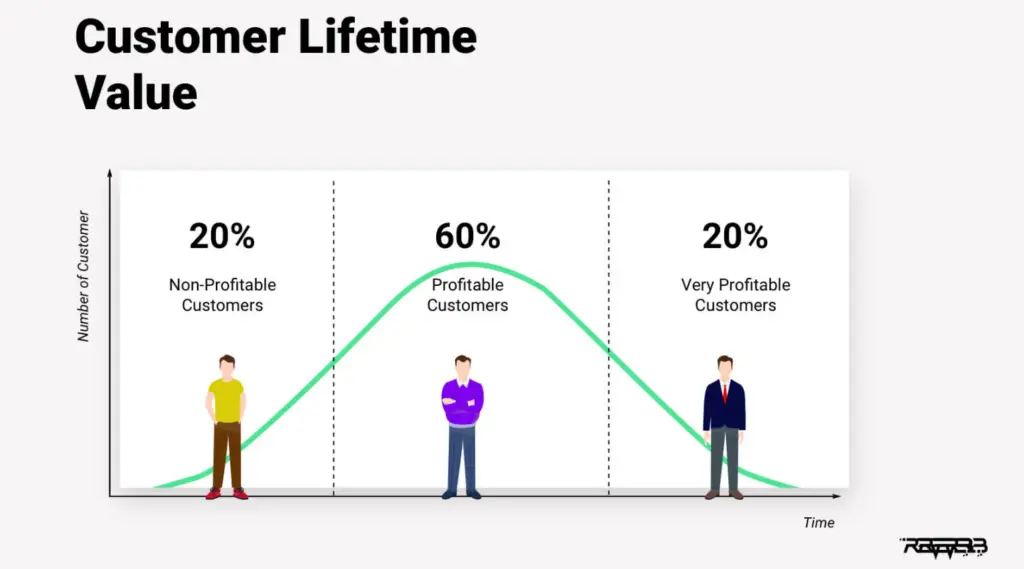Have you ever been in a meeting where everyone throws around those fancy digital marketing acronyms?
And you’re sitting there feeling like Joey from Friends trying to figure out what the heck they’re talking about?
You don’t want to be that clueless marketer who missed out on a golden opportunity just ’cause you couldn’t tell your acronyms from your elbows.
Today I’m going to spill the beans and teach you 21 digital marketing acronyms that are so essential that they could make or break your marketing.
The most essential digital marketing acronyms you need to know
These are the essential digital marketing acronyms that EVERY marketer should know.
These are the basic building blocks and form the foundation of any successful marketing campaign.
CPC: Cost Per Click
As the name suggests, every time someone clicks on your ad, you’ve gotta part with some cash.
CPC helps you understand the basic economics of your ad campaigns.
It’s pretty simple to calculate. All you need to do is divide the total cost of your ad campaign by the number of clicks it received, and voila.
CPM: Cost Per Mille
No, it’s not a fancy coffee order, but how cool would that be?
Mille just means 1000 in Latin. In terms of advertising, it means the cost per 1000 impressions your ads receive.
Google defines impressions as “Each time your ad appears on Google or the Google Network, it’s counted as one impression.”
Now, it’s not as exciting as CPC, but it’s still an important metric to track. It’s a great way to measure the reach of your ads to compare the cost of different ad formats.
Like testing:
- LinkedIn ads vs Facebook Ads
- And Instagram ads vs Google Ads
If you want to know your CPM, simply divide the total cost of your campaign by the number of impressions it received, then multiply it by 1,000.
CTR: Click-Through Rate
CTR shows you the percentage of people who clicked on your ad after they saw it.
The reason why marketers love using CTR is because it helps you see which ad works best to grab someone’s attention.
Now, let’s dive into some real-life examples of how CTR can be used effectively in the world of digital marketing:
Example: A local pizza shop
Imagine a local pizza shop decides to run two Facebook ads to promote their new pizza flavour.
The first ad features an eye-catching image of a delicious, mouth-watering pizza with the caption, “Introducing the BBQ Chicken Pizza.”
The second ad shows a less appealing photo and a caption saying, “Try our new pizza flavour today.”
The results?
After a week, they see that the:
- First ad has a CTR of 3.5%
- While the second ad has a lower CTR of 1.2%
This tells the pizza shop owner that the first ad is more effective in grabbing people’s attention.
And they decided to reallocate all of the ad spend to the first ad to get the most bang for their buck.
To calculate your CTR, you just need to divide the number of clicks your ad got by the number of times it was shown (impressions) and multiply by 100.
CPA: Cost Per Acquisition
This is arguably the most important advertising metric you’ll ever come across.
It tells you how much it costs you to get a new customer (after all expenses).
BUT, in digital advertising, it’s common for marketers to use CPA and cost per conversion interchangeably (don’t ask me why).
Anyhoo, your ultimate goal is to keep your CPA numbers as low as possible.
Because, let’s be real, you want to buy new customers at a reasonable investment.
To calculate CPA, divide the total cost of your ad campaign (a.k.a. Channel spend) by the number of new customers it generated.
There’s one small caveat here… some people like calculating CPA by the TOTAL amount a business pays to get that customer — including labour and material costs.
But you do you.
CVR: Conversion Rate
This is the holy grail of split-testing.
This little gem helps you measure the number of people who completed your desired action.
Since conversions can mean so many things, it helps you get more granular with your performance.
For example, you could measure your conversions based on when someone:
- Fills in a form
- Downloads an app
- Purchases a product
- Adds a product to their cart
- Calls you
- Opts-in to your newsletter, etc
To calculate your CVR, divide the number of conversions by the number of clicks your ad generated, then multiply that number by 100.
Example: An online course creator
So, there’s this person who’s created a really cool photography course.
And they’re using Facebook ads to promote it.
The course creator is testing two different landing pages to drive traffic to.
On the first page, the call-to-action is a simple “Sign Up Now” button.
On the second page, she offers a free sample lesson before asking visitors to sign up for the full course.
After a month, the course creator analyses the data and finds that the first landing page has a CVR of 8%, while the second page has a CVR of 15%.
This shows that offering a free sample lesson is a more effective strategy for converting visitors into paying customers.
Here’s a tip: Keep your CVR high, and you’ll be laughing all the way to the bank.

KPI: Key Performance Indicator
KPIs are often misunderstood. But they’re very simple to explain.
They’re similar to conversions in the way that you get to choose the goal.
Digital marketing KPIs are usually birds-eye view goals that you want to achieve. For example:
- Increase website traffic by 20% in the next quarter
- Increase conversion rate from 2% to 4% in the next six months
- Decrease CPA from $50 to $40 in the next year
- Increase CTR from 2% to 3% in the next quarter
- Increase social media engagement by 50% in the next year
It helps to start small, like setting up KPIs once every three months and tracking how you’re going each month.
My personal recommendation is to use the 80/20 rule when you’re choosing your KPIs.
ROI: Return on Investment
ROI stands for Return on Investment. And it’s a fancy way of saying, “Did I make more money than I spent?”
Let’s break it down using a candle store as an example. Say you spend a grand on Google Ads and make $3,500 in revenue. That’s a good start, but it doesn’t tell you the whole story.
To figure out your ROI, you subtract the cost of the campaign ($1,000) from the revenue ($3,500). That gives you $2,500.
Next, divide $2,500 by $1,000 to get 2.5. Finally, multiply 2.5 by 100 to get your ROI percentage: 250%.
In other words, for every dollar you spent, you made $2.50. Not too shabby, right?
But here’s the thing: you don’t just want a one-time success story.
You want to build a sustainable, profitable business. And that means keeping an eye on your ROI for every campaign you run.
When you understand ROI, you can make informed decisions about where to allocate your resources.
Maybe Google Ads isn’t giving you the best ROI, but Facebook ads are crushing it. Or maybe influencer marketing is your secret weapon.
The point is, without ROI, you’re just throwing spaghetti at the wall and hoping something sticks. And as much as we love candles, we don’t want you to waste your hard-earned cash.
ROAS: Return on Ad Spend
Let’s face it, nobody likes to waste their hard-earned cash on crappy ads that don’t generate any revenue.
That’s where ROAS comes in handy. It’s like a compass that points you in the direction of profitable advertising.
ROAS helps you understand the real value of your ad campaigns. It’s not just about driving traffic to your website or getting more likes on social media. It’s about making money.
So, what does ROAS even mean?
Well, it’s a fancy way of measuring how much bang you’re getting for your ad bucks.
Let’s say you invested $100 in an ad campaign and it brought in $500 in revenue. That means your ROAS is 5:1, or 500%. Boom, simple as that.
But why should you care about ROAS? Because it tells you whether or not your ads are pulling their weight.
If your ROAS is high, then you’re getting a juicy return on your advertising investment. And who doesn’t love that?
Calculating ROAS is a piece of cake.
Just divide the total revenue from your ad campaign by the total cost of the campaign, then multiply that number by 100. The bigger the number, the happier you should be.
CLV: Customer Lifetime Value
This is the golden goose of business metrics.
Basically, CLV is how much a customer is worth to you over the course of your relationship with them.

Why is this important?
Knowing your customers’ lifetime value can help you make strategic decisions about how much money to invest in acquiring new customers and keeping your existing ones happy.
Think of it like this: if you know that each customer is worth, say, $500 to you over the course of your relationship, then you can justify spending up to that amount to acquire a new customer.
Makes sense, right?
The formula for calculating CLV is as follows:
CLV = (average value of a purchase) x (number of times the customer will buy each year) x (average length of the customer relationship in years)
For example, let’s say you run a pet store and have a loyal customer who spends $50 every month and has been shopping with you for 5 years.
Using the formula, you can calculate their CLV like this:
CLV = $50 x 12 x 5 = $3,000
So, what does this mean for you?
It means that you should be paying extra attention to customers like this, who are likely to stick around and spend more money over time.
By focusing on customers with a higher CLV, you can prioritise your marketing efforts and invest more in retention strategies to keep them coming back for more.
AOV: Average Order Value
AOV is the average amount of money customers spend each time they hit that “Place Order” button on your website.
To figure out your AOV, all you have to do is take your total revenue and divide it by the number of transactions.
Simple, right? Let’s take a quick example to drive the point home.
Say you run an online store selling vintage vinyl records (because, let’s be honest, who doesn’t love a good throwback tune?).
In one month, you make a total revenue of $4,000 from 200 orders.
That means your AOV is $20 — in other words, on average, each customer spends twenty bucks every time they place an order.
Now, here’s where things get interesting.
If you’re like most ecommerce businesses, you’re probably focused on getting customers to spend more than their AOV.
Maybe you offer free shipping on orders over $25, or you throw in a free gift for purchases over $50.
And that’s all well and good — but is it really bringing you the highest profit margins?
Let’s say you offer a discount of 20% discount on all orders over $50.
Sure, you might get more customers to spend more money, but you’re also reducing your profit margins on each sale.
And that’s not sustainable in the long run.
So, what’s the solution?
Well, for starters, you need to know your AOV inside and out.
Use customer reports on your ecommerce platform to track this number, along with other important metrics.
Then, instead of pushing customers to spend more than their AOV, focus on ways to increase your profit margins on each sale.
Maybe that means offering a premium version of a product at a higher price point, or cross-selling complementary items to boost the total purchase value.
Churn rate
Ah, yes — the silent killer of your customer base.
Your churn rate is the number of customers who wave goodbye and leave your product or service for greener pastures.
And let me tell you, it’s not a great feeling when you see those numbers climbing higher and higher.
You might think everything’s hunky-dory, but all the while your customers are slipping through your fingers like sand in an hourglass.
High churn rates are a red flag that something isn’t right.
Maybe your product isn’t living up to expectations, or maybe your competitors are eating your lunch.
So, how do you calculate your churn? It’s simple, really.
Take the number of customers you lost during a given period of time and divide it by the total number of customers you had at the beginning of that period.
Then, multiply that number by 100.
Let’s say you run a subscription service that had 1,000 customers at the start of the month.
By the end of the month, 150 of those customers had cancelled their subscriptions.
That means your churn rate for that month is 15% (150 ÷ 1,000 x 100). Yikes.
Now, don’t go throwing in the towel just yet.
High churn rates aren’t the end of the world. In fact, they can be a valuable learning experience.
Use them as an opportunity to find out what’s not working and make some changes. Your customers will thank you for it (hopefully by sticking around a little longer).
Marketing acronyms for channels
Digital marketing covers various channels, from social media to email to search engines.
Each channel has its own unique set of acronyms that every marketer should know.
If you understand these acronyms, you can better make data-driven decisions about where to focus your efforts.
Let’s dive in.
SEO: Search Engine Optimisation
SEO is the art and science of making your website and content more attractive to search engines like Google.
Think of it like this: your website is a party, and search engines are the bouncers at the door.
If your website is well-optimised for SEO, it’s like you’re handing the bouncer a VIP pass.
Your website will get in faster and will be more likely to get noticed by potential visitors.
SEM: Search Engine Marketing
So what exactly is SEM?
In a nutshell, it’s all about using paid advertising to boost your visibility on search engines.
Think of it like paying for a prime spot on the front page of the Yellow Pages (remember those?) or a billboard on the busiest street in town.
When someone types in a certain keyword related to your business, your ad will show up at the top of the search results, ideally leading to clicks, conversions, and cha-ching.
SMM: Social Media Marketing
It’s the art of making people stop their endless scrolling, pay attention, and engage with your content on social media.
But SMM isn’t just about getting likes and followers (although, let’s be real, we all love a good ego boost).
It’s about building relationships with your audience, establishing trust, and ultimately driving sales.
PPC: Pay Per Click
Let’s say you’re a cheese connoisseur (like myself) and you want to promote your cheese blog.
By bidding on keywords like “artisanal cheese” or “gouda goodness”, your ad will appear at the top of the search results when someone types in those keywords.
And if someone clicks on your ad, boom — you just got a potential reader for your blog.
But, and here’s the catch, you have to pay for each click.
So, if you’re not careful with your bidding, you could end up spending more money on clicks than you’re making in sales.
It’s like buying a round of drinks for your friends and realising you’re broke halfway through the night.
CRO: Conversion Rate Optimisation
You know what’s better than getting tonnes of clicks on your website? Getting those clicks to actually convert into sales.
That’s where Conversion Rate Optimisation (CRO) comes in.
Think of it as the secret sauce to turning your website into a money-making machine.
It’s all about tweaking and improving your website and landing pages to ensure that your visitors take action — whether it’s buying your product, filling out a form, or subscribing to your newsletter.
But don’t think of CRO as a one-and-done deal.
It’s an ongoing process that requires continuous testing and refinement.
It’s like a game of chess, where you need to anticipate your opponent’s moves and adjust your strategy accordingly.
CRM: Customer Relationship Management
The fortune is in the follow-up. And that’s where CRM comes in — short for Customer Relationship Management, in case you’ve been living under a rock.
Think of it as your trusty assistant who never forgets a name, a date, or a preference.
CRM systems help you keep track of all your interactions with customers, from emails to phone calls to in-person meetings.
And when you have all that data at your fingertips, you can use it to personalise your outreach, tailor your marketing messages, and ultimately, make more sales.
Let’s say you run a luxury chocolate shop (mmm, chocolate).
You have a customer named Sarah who comes in every few weeks to stock up on her favourite truffles.
With a CRM system, you can note her preferences (dark chocolate, sea salt, and caramel, please), her budget (she’s willing to splurge on a fancy box for gifts), and her contact information.
Then, when Valentine’s Day rolls around, you can send her a targeted email with a special offer on her favourite chocolates.
More SEO-based metrics (and other stuff)
Let’s take a closer look at these other acronyms that can help you understand the performance of your website and optimise it for search engines.
DA: Domain Authority
In simpler terms, DA is like a popularity contest for websites.
The higher your DA score, the more likely Google is to feature you on the first page of search results, making it rain with clicks and traffic.
But don’t go thinking DA is the end-all-be-all of SEO.
It’s just one piece of the puzzle, like that one jigsaw piece you can’t seem to find until you accidentally step on it.
Think of it this way: DA is like a grade on a test, but it doesn’t tell the whole story.
Just because you aced the test doesn’t mean you’re a genius. You could have just memorised the answers and forgotten them five minutes later.
To really dominate the digital space, you need a well-rounded strategy that includes killer content, strategic link-building, and social media savvy.
Like that one cool kid in high school who excelled in sports, academics, and social life, making the rest of us feel like underachievers.
PA: Page Authority
Page Authority is a metric that measures how likely a specific page is to rank in search engine results.
It’s based on a bunch of factors like the quality and quantity of links pointing to that page, the content on the page, and other mysterious criteria that only the Google gods know.
Think of it like this: you’re at a fancy restaurant, and the waiter hands you a menu with no prices.
You’re left guessing which dish is the most expensive and which one won’t break the bank.
Page Authority is like the prices on the menu. It gives you a sense of which page is the hotshot and which one’s just playing catch-up.
SERP: Search Engine Results Page
It stands for Search Engine Results Page, and it’s the battlefield where your website fights for attention against a gazillion other pages.
A/B Testing
The idea is simple — take two versions of your content, tweak a few things here and there, and then see which one gets better results.
Maybe it’s changing the colour of a button or the placement of a headline. It might seem like a small change, but trust me, it can make a big difference.
CTA: Call to Action
So what exactly is a CTA?
It’s basically a button, link, or message that tells your visitors what to do next.
It could be something as simple as:
- “Click here to buy now”
- “Sign up for our newsletter”
- “Download our free e-book”.
Now, you might be thinking, “Hey, I’ve got plenty of buttons on my website already. What’s the big deal?”
But here’s the thing — not all CTAs are created equal.
A poorly-designed CTA can be like a bad pick-up line — it’s just not gonna work.
A well-crafted CTA can make all the difference between a website that just looks pretty and one that actually drives sales.
So, don’t be shy — give your visitors a little nudge and see where it takes you.
You’re now a master of digital marketing acronyms
If you want to stay ahead, you have to know these acronyms.
That way, you can communicate more effectively with your team, clients, and partners.
So, don’t be a square. Learn and understand these acronyms, and you’ll be on your way to becoming the coolest digital marketing consultant on the block.
But it’s not just about impressing people.
Knowing these acronyms helps you communicate more effectively and efficiently.
No more long-winded explanations when you can just say “PPC” (pay-per-click) and everyone knows what you’re talking about.
And remember, the digital marketing game never sleeps.
Keep on learning and staying updated on the latest jargon to stay ahead of the competition.

